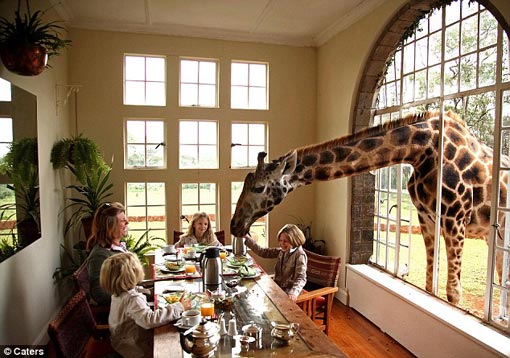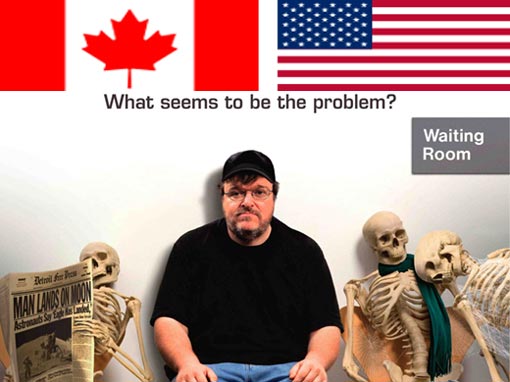You are hereHealth & Lifestyle
Health & Lifestyle
Cycling maps, bike routes - bicycle tours in Europe and connecting America by bicycle, 14,000 miles in 27 states

(quote)
United States Bicycle Route System taking shape
EuroVelo & USBRS. Bicycle route system project is part of a global trend, as countries & provinces establish national cycling networks — composed of on-road and trail facilities — to make cycling easier and more enjoyable in urban, suburban, and rural areas. Examples include the National Cycle Network in the United Kingdom, La Route Verte (the "Green Way") in Quebec Province, the D-Route Network in Germany, and VeloLand Switzerland. The U.S. Bicycle Route System (USBRS) to be established could become the largest national cycling route network on the planet. These systems are spurring major growth in bicycling and other non-motorized trips, with corresponding reductions in fossil fuel consumption and greenhouse gas emissions. read more »
To fight deforestation, Kenya in poverty ($857 GDP/capita) pledges to spend $20 billion & plant 7.6 billion trees

(quote)
*Update* 2019
Ranking/Country/GDP-capita
1 Luxembourg 114,234
2 Switzerland 82,950
— Macau 82,388
3 Norway 81,695
4 Ireland 76,099
5 Iceland 74,278
6 Qatar 70,780
7 Singapore 64,041
8 US 62,606
9 Denmark 60,692
10 Australia 56,352
11 Sweden 53,873
12 Netherlands 53,106
13 Austria 51,509
14 Finland 49,845
15 San Marino 48,946
— Hong Kong 48,517
16 Germany 48,264
17 Belgium 46,724
18 Canada 46,261
19 France 42,878
20 UK 42,558
21 Israel 41,644
22 New Zealand 41,267
23 United Arab Emirates 40,711
24 Japan 39,306 read more »
Invited harm. 150,000 pythons out of control, spreading... near daycare, hospital; toddler strangled

(quote)
A Burmese python measuring 17 feet in length was caught on the grounds of the Okeechobee Veterinary Hospital - the male snake weighed 207 pounds and measured 26 inches in diameter. The snakes are often abandoned by disgruntled pet owners when they become too large to handle and too expensive to feed. 150,000 snakes "out of control" & spreading - they can reproduce rapidly with female pythons laying up to 80 eggs at a time, and have no natural predators in Florida.

Fla. trapper captures 14-foot python near day care center read more »
World's tallest animal: Rarest endangered Rothschild giraffes join family breakfast; unlikely bond with short goat at 1st sight

(quote)
Eight endangered Rothschild giraffes, the rarest (only a few hundred left in the wild) on earth second only to the Niger Giraffe, are free to roam their 140-acre estate and are regular visitors at their English-style manor built in the colonial era. Back in 1794, the grandson of a Scottish earl, Jock Leslie Melville, and his American wife Betty bought the stately home. Later that year they moved two highly endangered Rothschild giraffe into the estate. The ones at the site grow up to more than 16ft tall, weigh two tons & have a life expectancy of up to 30 years. Every day shortly before 9am, the mammoth beasts stroll up to the house and poke their heads through the windows and doors in search of morning treats. Now, married owners Tanya & Mikey Carr-Hartley literally share their dining table with them.
Every mind must make its choice between truth and repose. It cannot have both. - Ralph Waldo Emerson
US could provide Medicare for all citizens as Canada does if some war spending ($891,971,525,495 since 2001) spared

(quote)
The health care system in Canada is funded by a mix of public (70%) and private (30%) funding. The U.S. spends more per capita than any other nation in the world, but is the only wealthy industrialized country in the world that lacks some form of universal health care. In 2006, 70% of health care spending in Canada was financed by government, versus 46% in the United States. U.S. government expenditure on health care was just under 83% of total Canadian spending (public and private).

All Canadian citizens are covered with a provincial Medical Services Plan, which receives funds from the federal government via tax transfers. The system is therefore a single-payer one, whereby everyone contributes to the care of all citizens. Individuals choose their own physicians, who decide what care is required - not the government, regardless of what you might hear on radio and TV talk shows - and they do not have to ante up large sums for emergency and intensive care or even for infant delivery. The system works very well.
(unquote)
Photos courtesy of costofwar.com and docotube.com read more »



















